There can be your advertisement
300x150
10 Secrets of Decorating Small Apartments You Didn't Know
1. Define Boundaries
At first glance, an open and unified space is the best option for a small apartment. However, such visual ambiguity can quickly become tiring: it may seem that interior elements are thrown together into a heap, and clutter becomes more noticeable. You need to define separate areas in the room according to their purpose: relaxation zone, living room, children's area, dining room. An open hallway is desirable to separate from the living room. For this purpose, for example, a regular coat rack stand can be used.
Placing a buffet or sideboard between the kitchen and dining room will make serving and storing dishes easier. Turn the sofa towards the foot of the bed to instantly draw attention to the living room. If you have an interesting hobby, don't be afraid to showcase it using interior details. For a bicycle, you can make a convenient stand in the inner part of the room or in a special niche, and flower growers' achievements suit well for decorating a corner or partition.
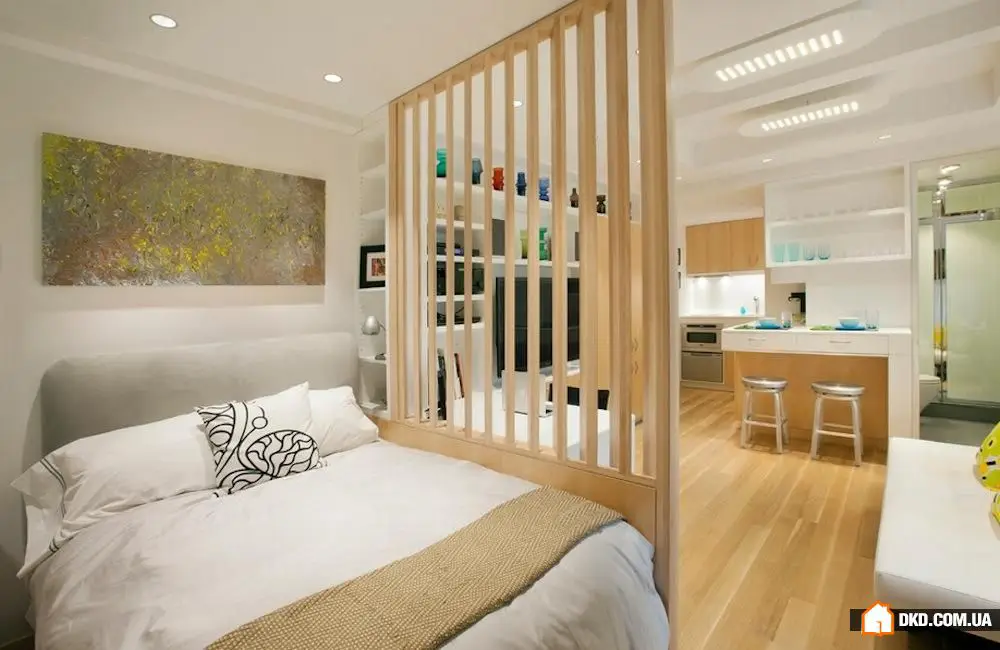
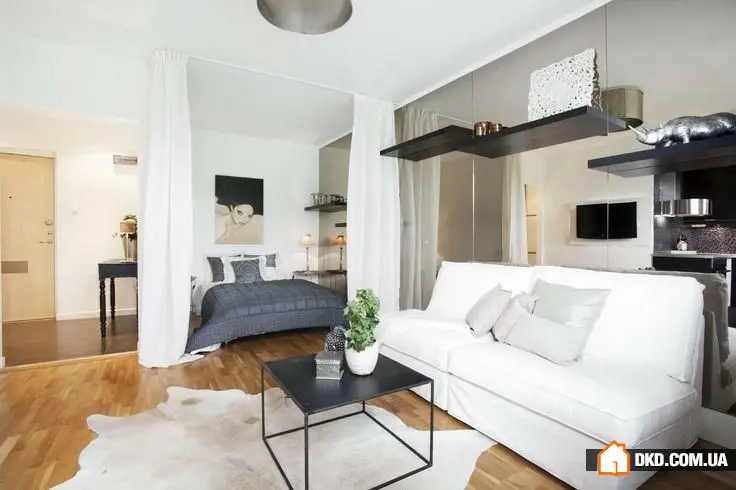
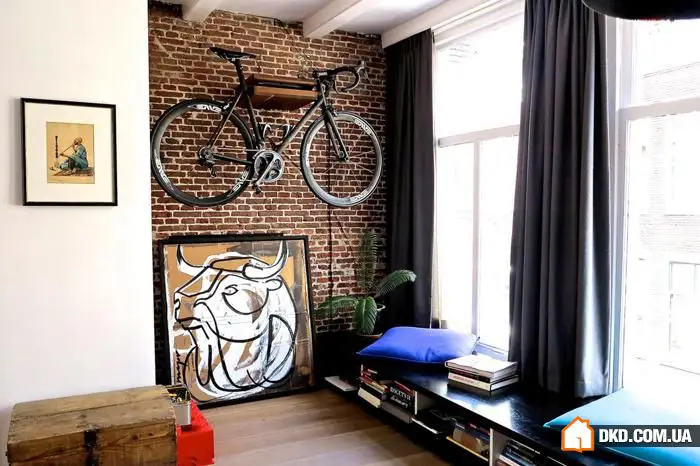
2. Buy Multi-functional Furniture
When dealing with a small space, every centimeter counts. Pay attention to multi-functional furniture. For example, a soft pouf is convenient for putting your feet while watching TV, and when guests come, it can be used to organize a table using built-in wooden boards or trays. Some wardrobes can turn into convenient desks and even accommodate a whole bed.
Whichever option you choose, ensure that it fits perfectly in the space of your room. Note that classic soft sets can reduce the area. But today's furniture market offers many options designed specifically for small apartments.
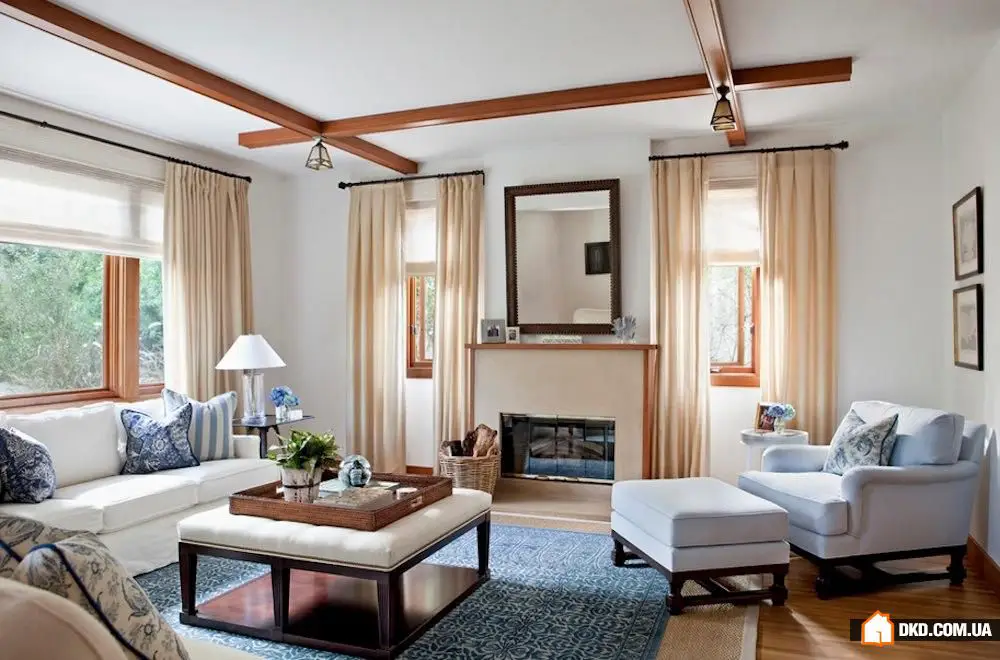


3. Reimagine Unused Space
Carefully examine the space in the room and identify the least functional areas - so-called dead zones. Think about unused corners and bare walls. A large empty windowsill can easily become a convenient workspace. An angular shelf can accommodate a significant portion of household items. You can place several baskets or containers on the refrigerator and store rarely used kitchen utensils there.
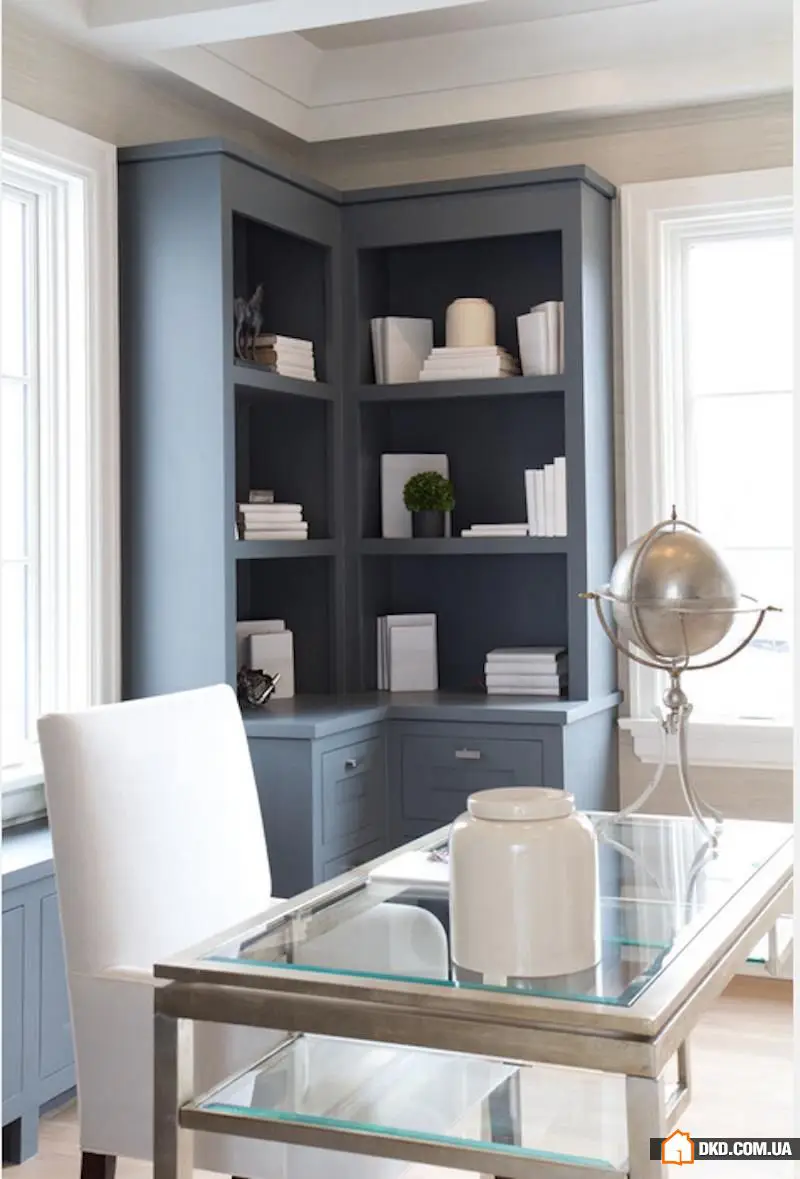

4. Go Vertical
When planning the interior of a small room, it's useful to use not only horizontal but also vertical space. The best choice for optimal and economical placement of items in small spaces is tall and narrow storage systems. Open shelves around doorways won't take up much space and will look very original. A through-the-wall shelf from floor to ceiling can serve not only as a functional storage system but also as a convenient partition separating the living room from the bedroom. A lot of household items can be hidden in built-in sliding drawers.

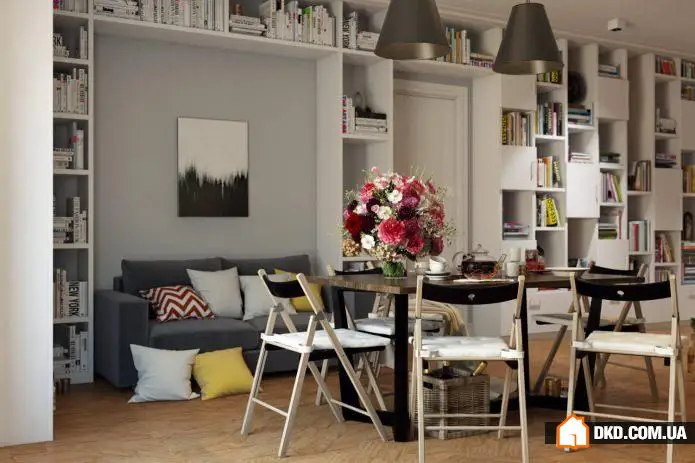
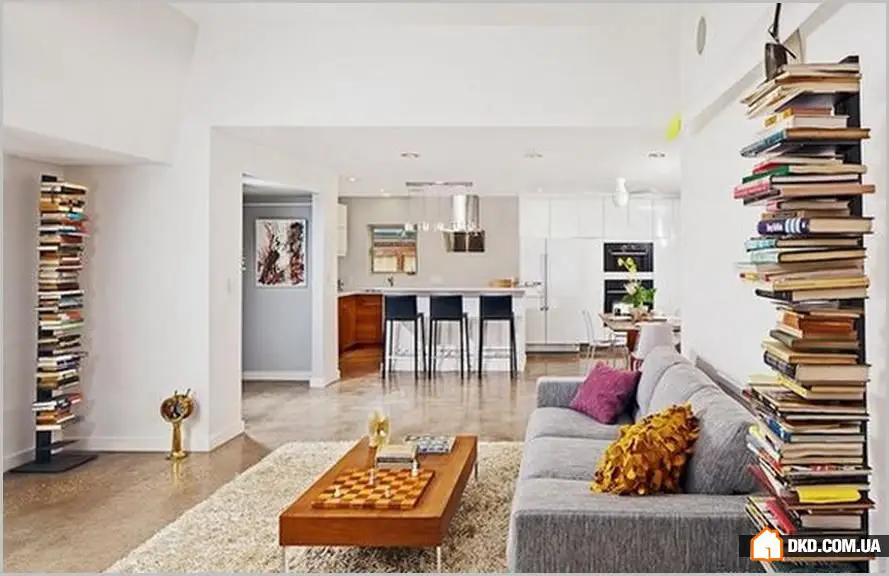
5. Improve Storage Systems
In a small apartment, the question of storage system should be solved as efficiently as possible to avoid clutter and not waste a lot of time searching for the right item. Forget about bulky wardrobes and chests that can seriously harm the modest space of an apartment. Prefer convenient and lightweight structures placed in sight or in the path of your movement through the room: open shelves along the wall with small baskets, hanging pockets or hooks on the back of doors, containers under the bed and so on. This will significantly reduce the time spent searching for items.
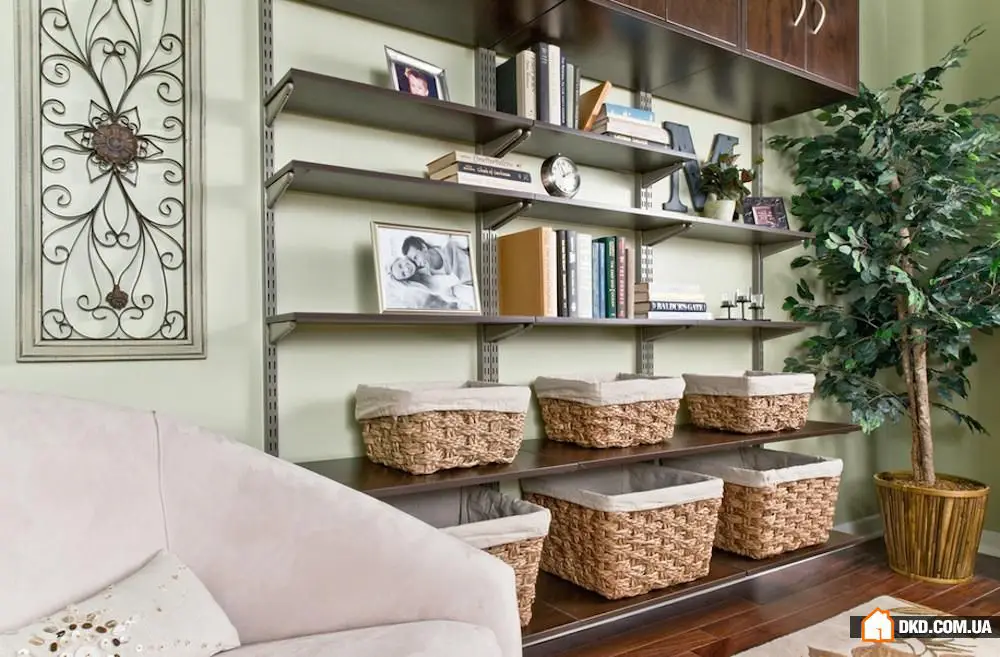
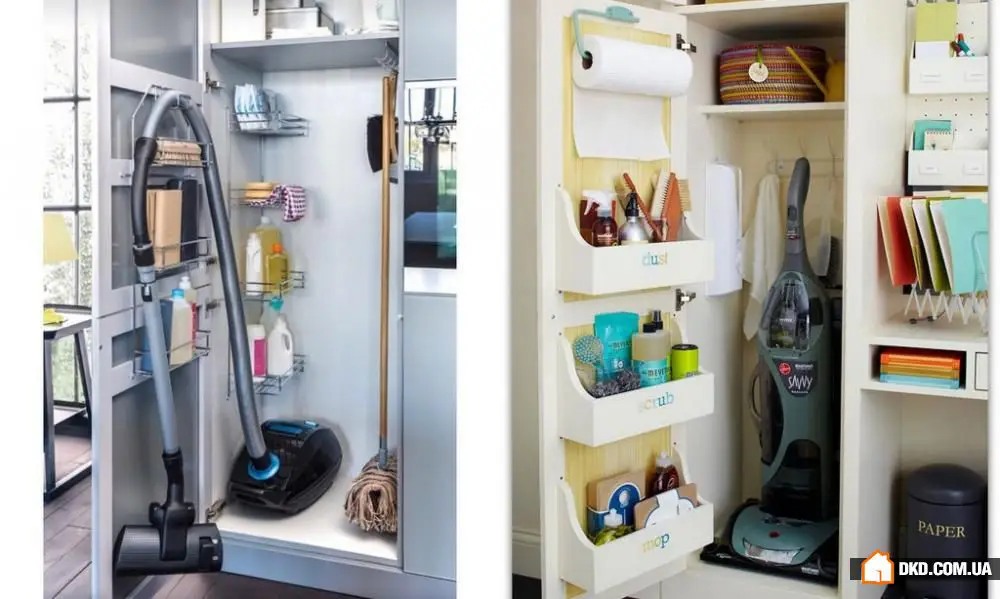
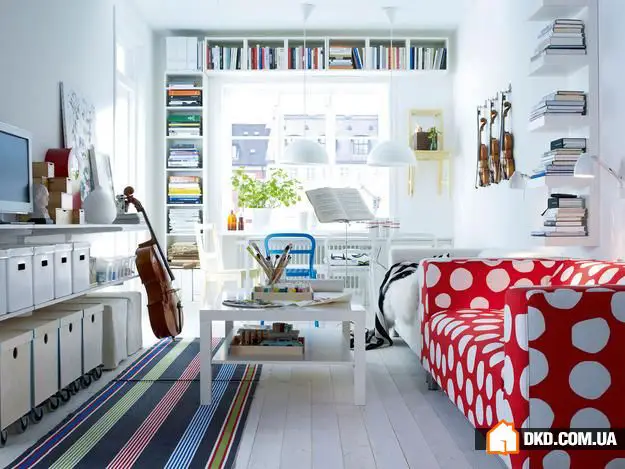
6. Prefer Light Palette
When choosing a color palette for a small apartment, focus on light shades. While saturated, dark colors tend to visually reduce space, a light background makes it appear bigger and wider. It's best to focus on three colors: two light, neutral tones for the background and one dark, deep shade for adding accents and visual interest to interior elements.
For those who find it hard to be in an environment of calm monochromatic tones, there's a solution: choose furniture in neutral, light shades. And use a second, bolder color to emphasize specific decor elements and give the interior more expression. With a rainbow palette, be careful - excessive use can negatively impact small spaces.
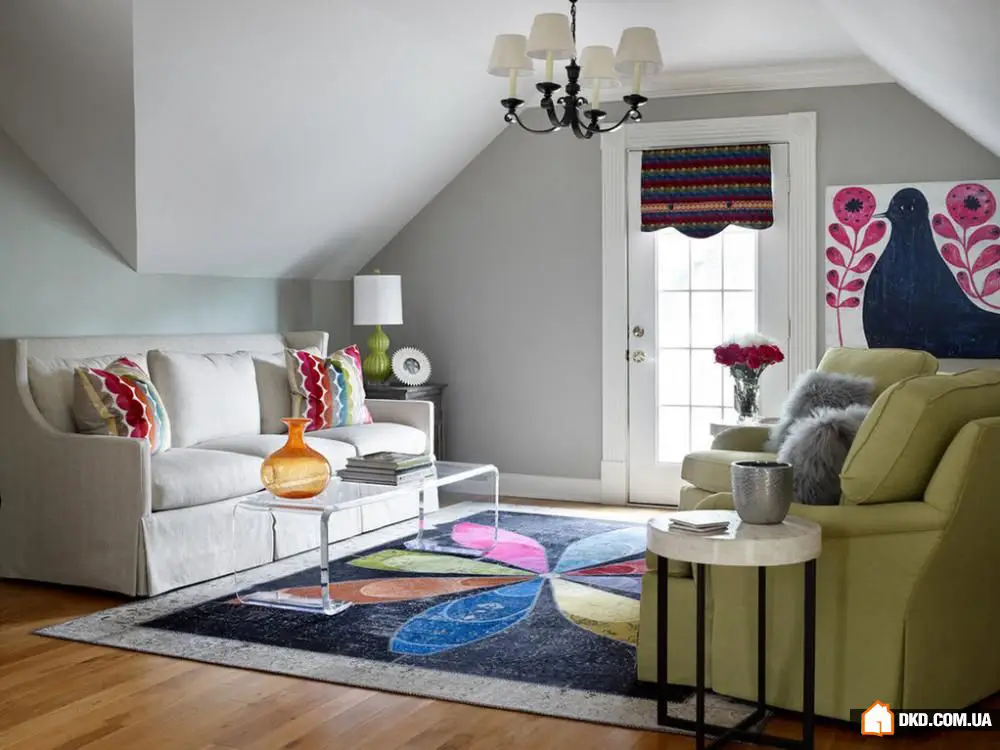

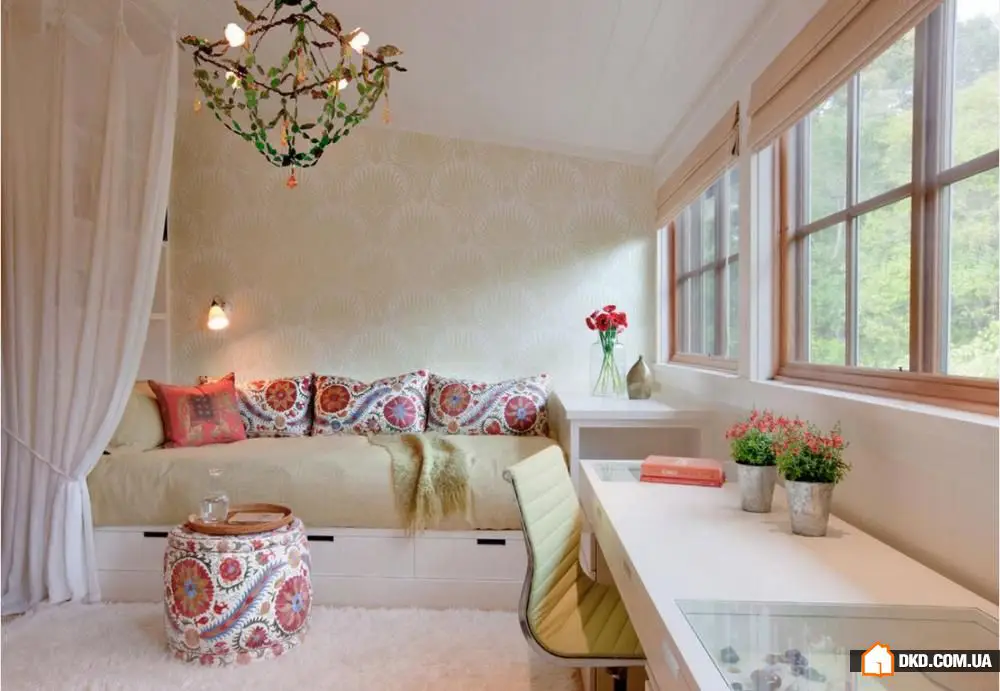
7. Add Curved Lines
Most small apartments usually have a rectangular box shape, which makes them visually boring. This can be fixed by placing furniture of different forms in the room: for example, place a round table next to sharp-cornered chairs or a sofa, and opposite the soft, formless sofa - a square coffee table.
Include interior items in this process: instead of a rectangular mirror, choose an intricately curved one; instead of straight, classic floor lamps, buy several round-shaped lamps. An abundance of straight lines makes the interior too artificial - learn to play with forms, emphasizing their naturalness.

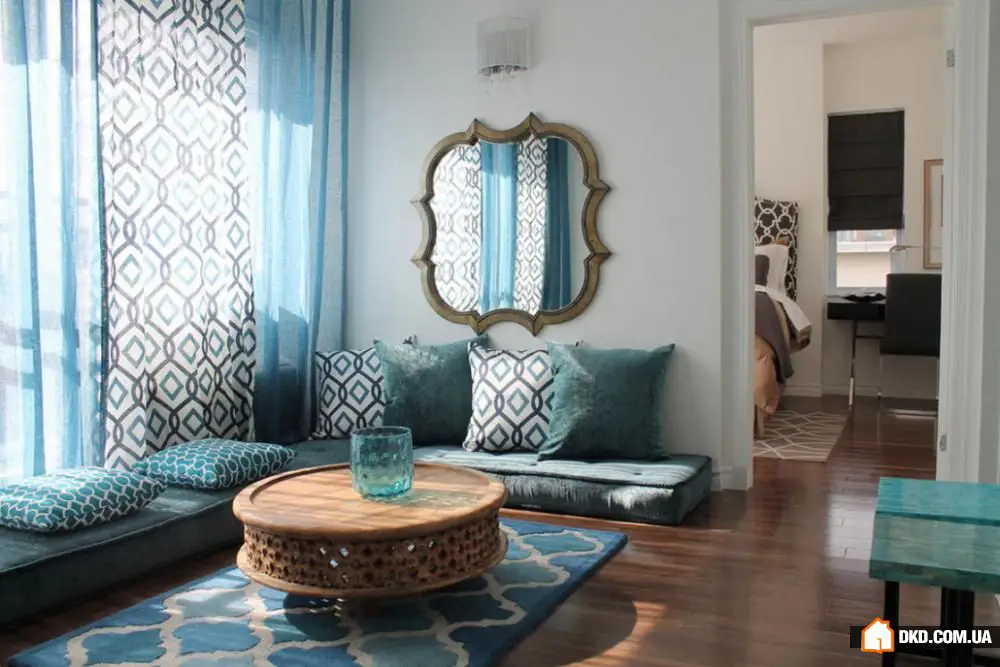

8. Create Layers
One of the common problems in interior design in small spaces is lack of depth: the view quickly absorbs the image. But this can easily be fixed by adding textures: tapestries on walls, rugs in one or two layers, covers on furniture, several cushions... This will provide a cozy and warm atmosphere and add depth to the space.
But layering is not only about texture, but also contrast. When choosing furniture and accessories, pay attention to details made of different materials, shades, and forms. For example, a contrasting cushion with a bold and vibrant pattern would suit a sofa in neutral tones very well. To soften the hard floor surface, lay down a furry rug.

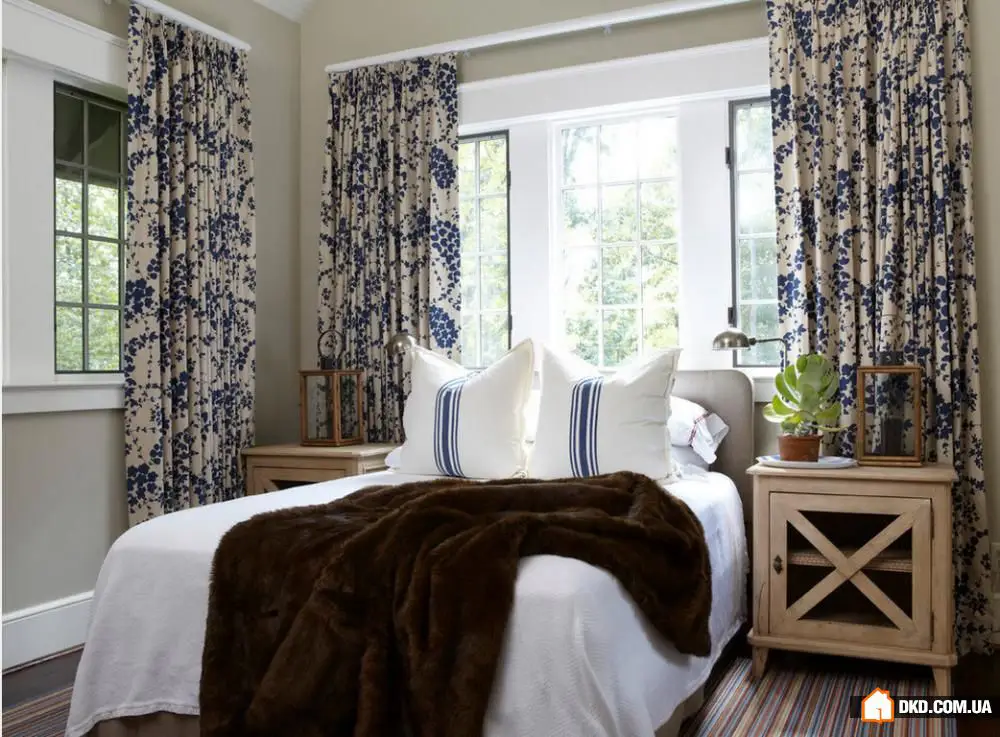
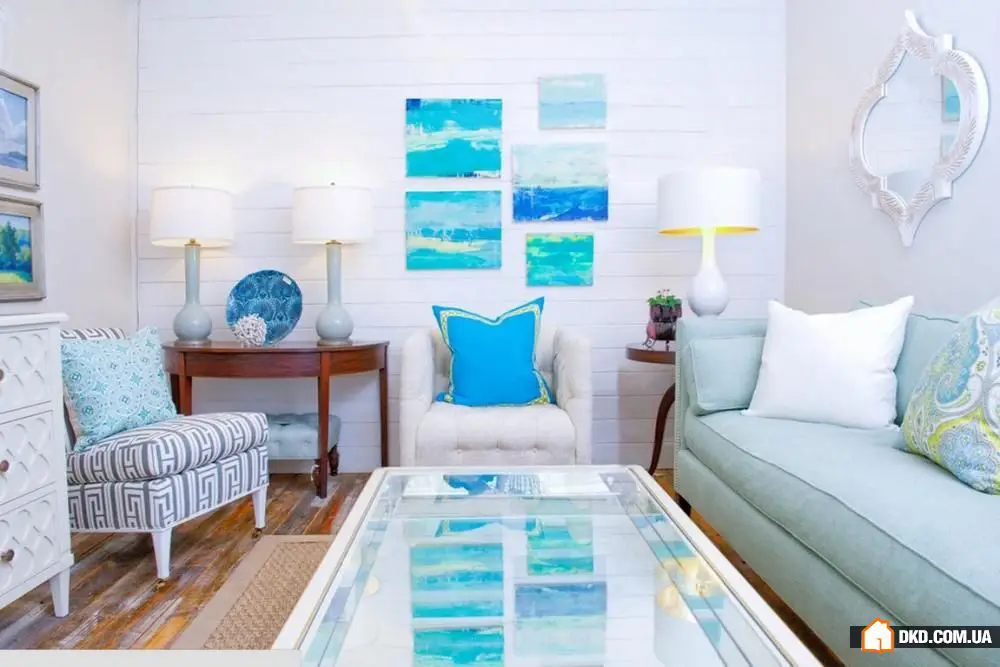
9. Use Suspended Structures
In a small apartment, even lightweight furniture with a floor base can narrow the space. The fewer visible elements, the better. Try to include more suspended structures in your interior: instead of bookshelves - shelves with hidden mounting, wall desks, and in the bathroom install a pedestal-free sink.
Different from regular furniture, suspended ones take up much less space. With them, the room space becomes lighter and more ethereal, allowing your gaze to travel freely without focusing attention on complex and bulky constructions. A wall with several differently sized open shelves looks stylish.
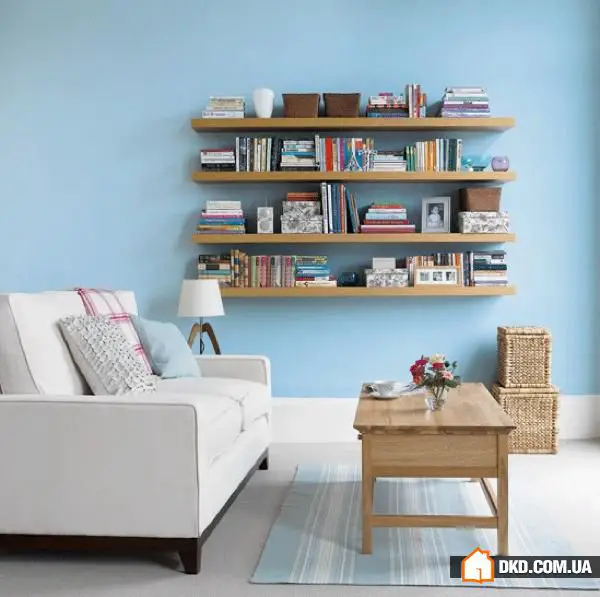


10. Keep Regular Cleaning
In a small space, clutter is immediately noticeable. To prevent unnecessary items from piling up and cluttering the room, it's advisable to periodically conduct a thorough review and get rid of junk. Regularly maintain order in the house to save time later. Set specific cleaning schedules for each part of the apartment and strictly follow them, always starting with the planned area.
Train yourself to return items to their places immediately after use. According to scientists, if you follow this rule for 66 days, it will become a habit. And with that habit, maintaining order in even a large apartment will not be difficult.


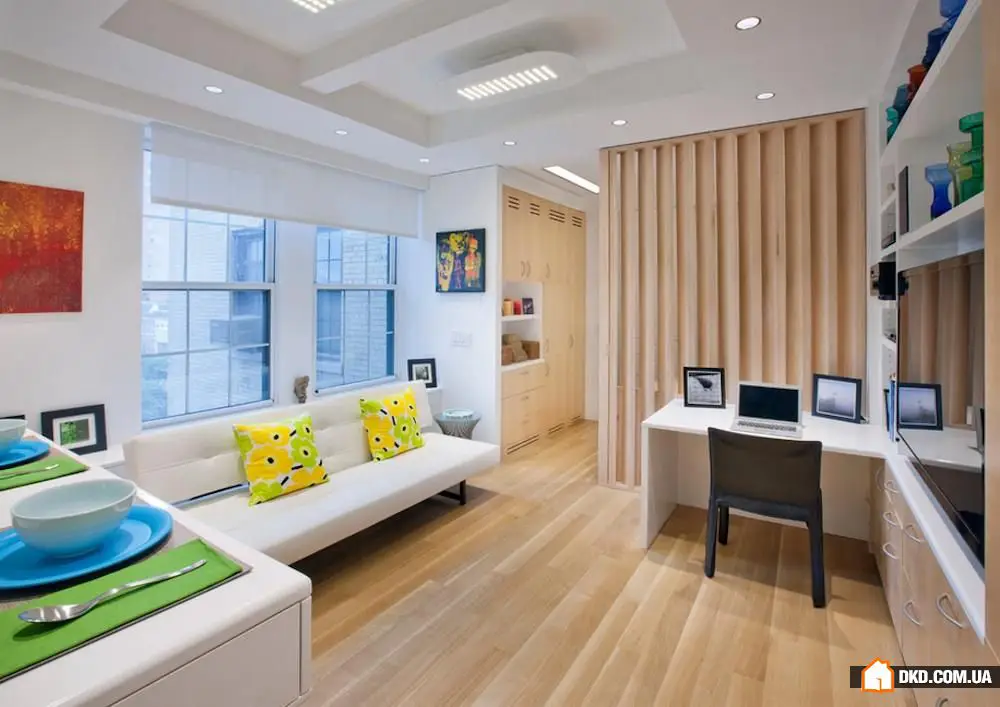
More articles:
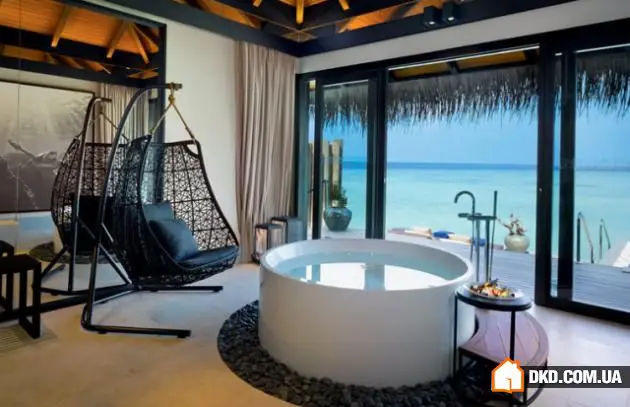 Can You Enjoy the Enchanting Ocean While Relaxing in Your Bathroom?
Can You Enjoy the Enchanting Ocean While Relaxing in Your Bathroom? 17 Ideas for Unusual Stone Bathtubs
17 Ideas for Unusual Stone Bathtubs 21 Beautiful Feminine Bedroom Ideas for Every Lady
21 Beautiful Feminine Bedroom Ideas for Every Lady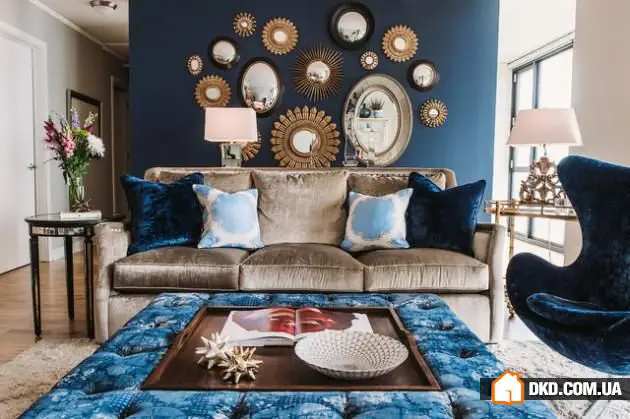 Decorating Interior Walls with Thematic Mirror Sets
Decorating Interior Walls with Thematic Mirror Sets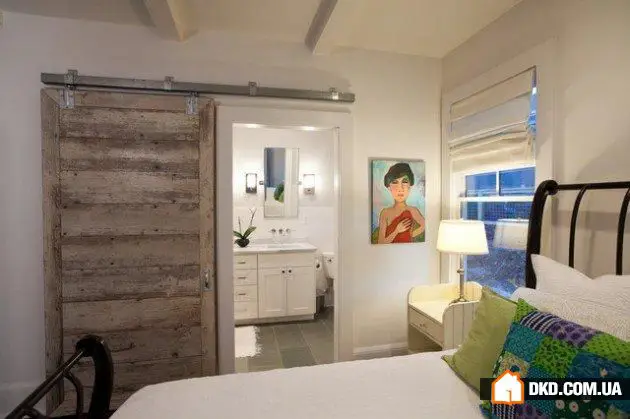 Sliding Doors — A Brilliant Solution for Limited Space
Sliding Doors — A Brilliant Solution for Limited Space 100 Tips for Every Situation in Life
100 Tips for Every Situation in Life 16 Genius Ideas for Crafty Hands to Effectively Store Your Office Supplies
16 Genius Ideas for Crafty Hands to Effectively Store Your Office Supplies 17 Unique Bookshelf Designs for True Book Lovers
17 Unique Bookshelf Designs for True Book Lovers